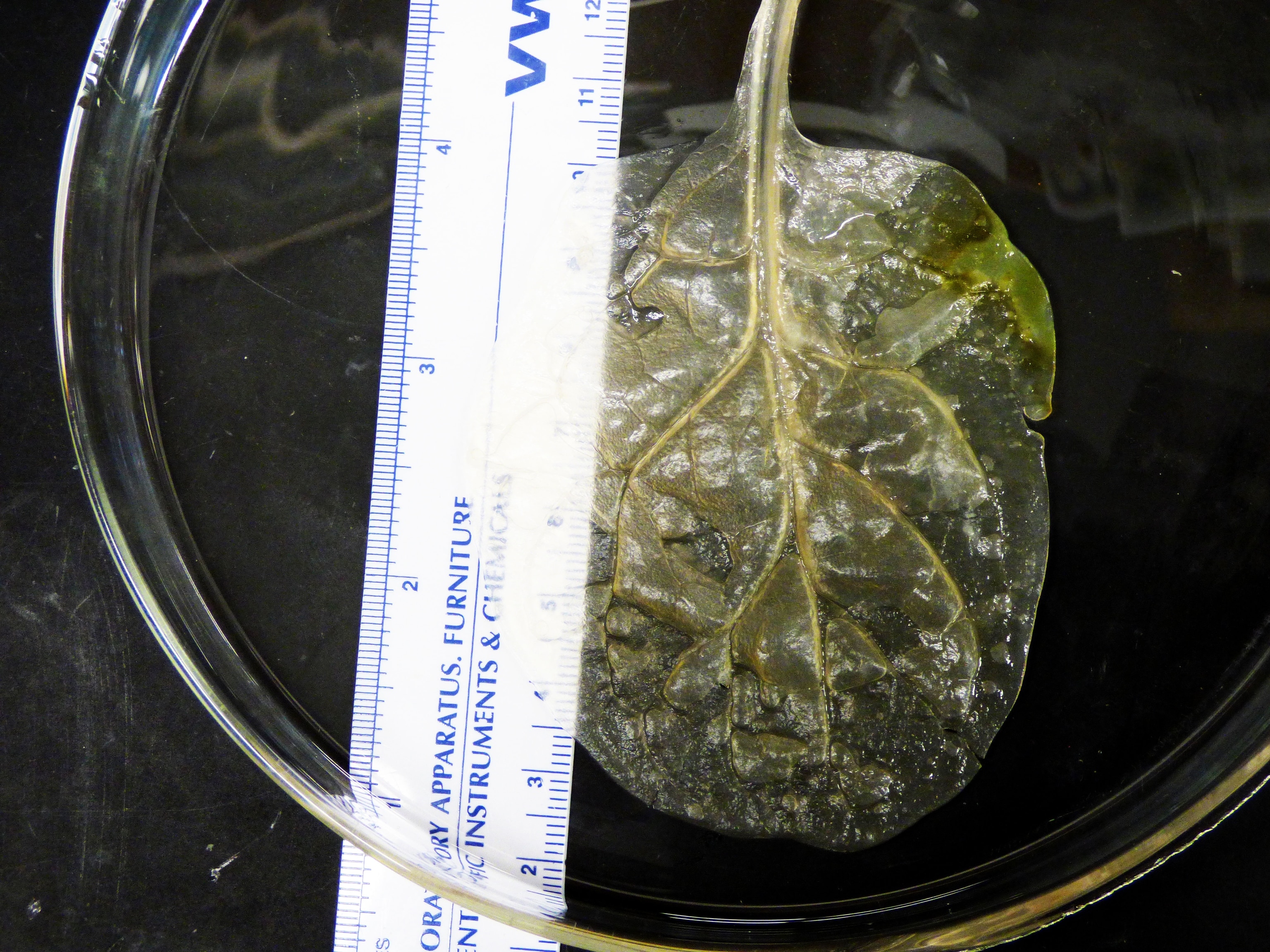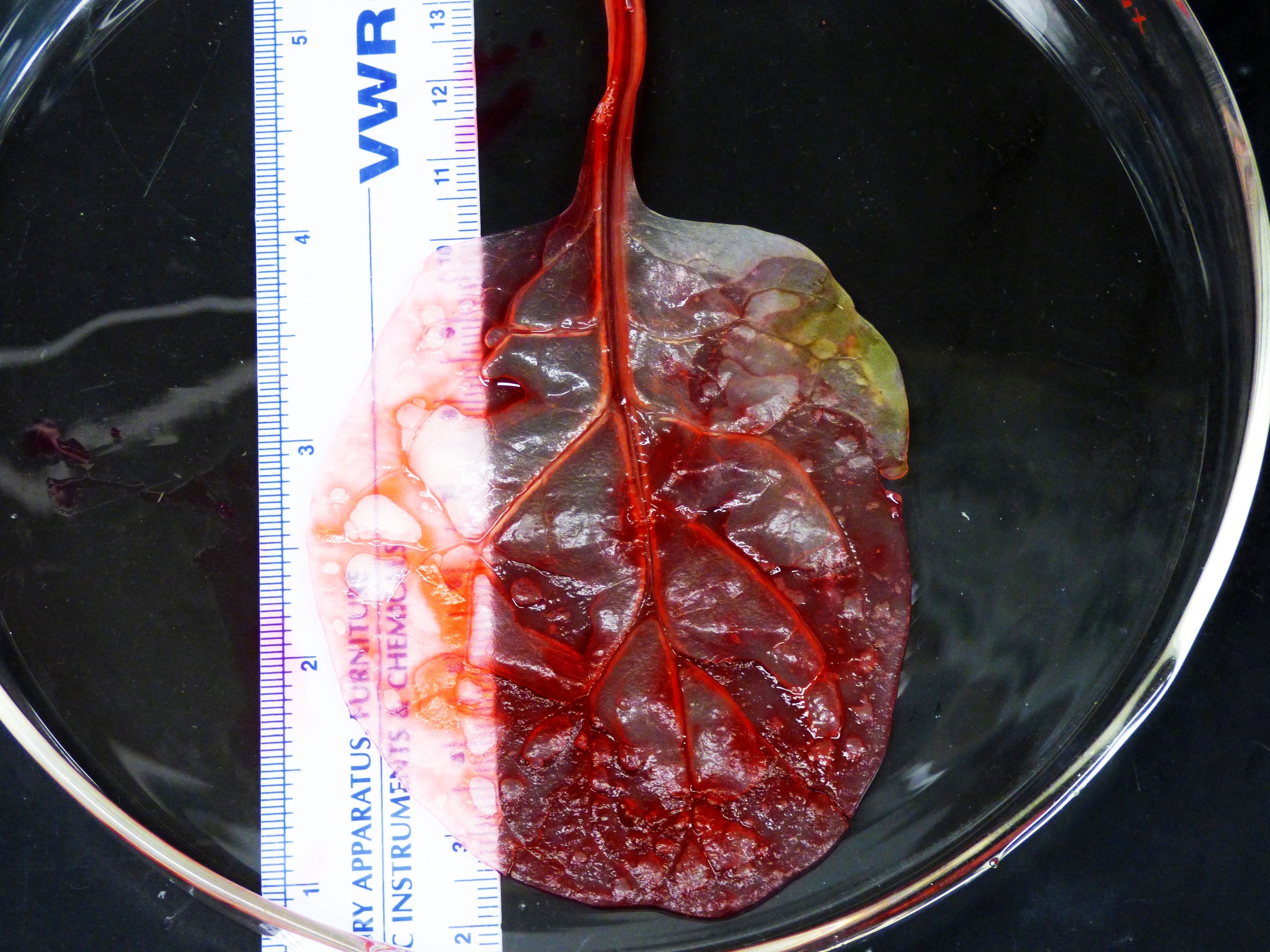Spinach Leaf Transformed Into Beating Human Heart Tissue
Using the plant like scaffolding, scientists built a mini version of a working heart, which may one day aid in tissue regeneration.
Scientists have found a way to use spinach to build working human heart muscle, potentially solving a long-standing problem in efforts to repair damaged organs.
Their study, published this month by the journal Biomaterials, offers a new way to grow a vascular system, which has been a roadblock for tissue engineering.
Scientists have already created large-scale human tissue in a lab using methods like 3D printing, but it’s been much harder to grow the small, delicate blood vessels that are vital to tissue health.
“The main limiting factor for tissue engineering … is the lack of a vascular network,” says study co-author Joshua Gershlak, a graduate student at Worcester Polytechnic Institute (WPI) in Massachusetts, in a video describing the study. “Without that vascular network, you get a lot of tissue death.”


One of the defining traits of a leaf is the branching network of thin veins that delivers water and nutrients to its cells. Now, scientists have used plant veins to replicate the way blood moves through human tissue. The work involves modifying a spinach leaf in the lab to remove its plant cells, which leaves behind a frame made of cellulose.
“Cellulose is biocompatible [and] has been used in a wide variety of regenerative medicine applications, such as cartilage tissue engineering, bone tissue engineering, and wound healing,” the authors write in their paper.
The team then bathed the remaining plant frame in live human cells, so that the human tissue grew on the spinach scaffolding and surrounded the tiny veins. Once they had transformed the spinach leaf into a sort of mini heart, the team sent fluids and microbeads through its veins to show that blood cells can flow through this system.
The eventual goal is to be able to replace damaged tissue in patients who have had heart attacks or who have suffered other cardiac issues that prevent their hearts from contracting. Like blood vessels, the veins in the modified leaves would deliver oxygen to the entire swath of replacement tissue, which is crucial in generating new heart matter.
The study team says the same methods could be used with different types of plants to repair a variety of tissues in the body. For instance, swapping out the cells in wood might one day help fix human bones.
“We have a lot more work to do, but so far this is very promising,” study co-author Glenn Gaudette, also of WPI, says in a press statement. “Adapting abundant plants that farmers have been cultivating for thousands of years for use in tissue engineering could solve a host of problems limiting the field.”





